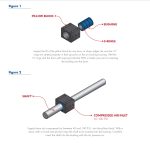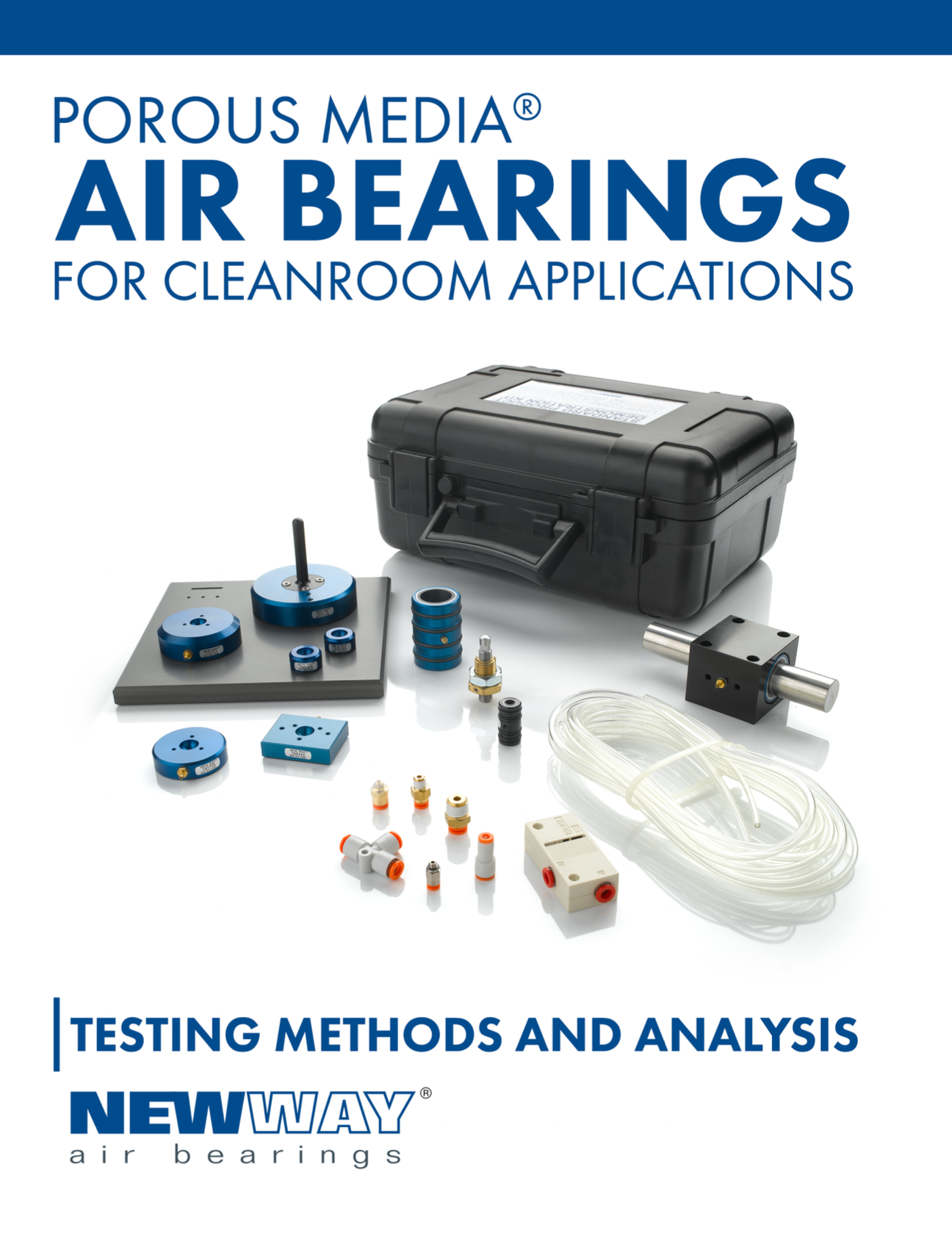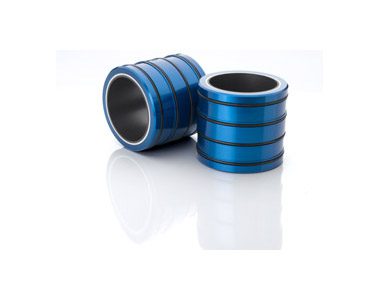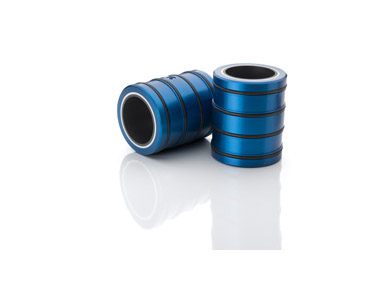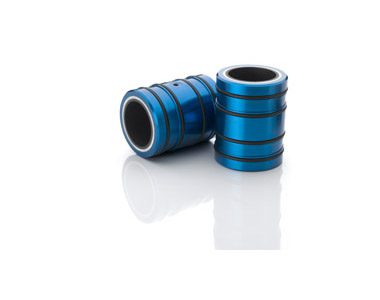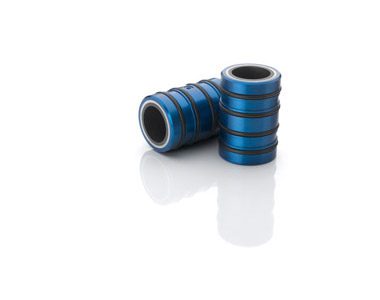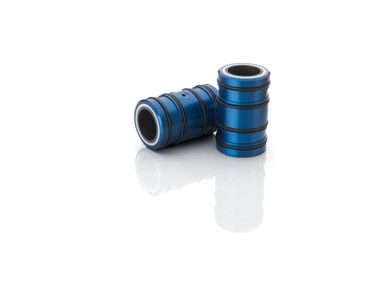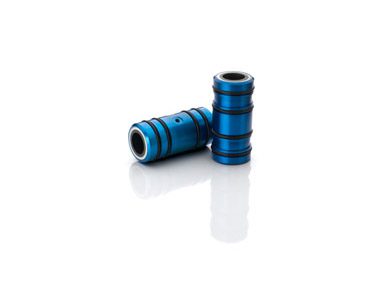Products
- Spherical Air Bearings Standard Line
- Hubspot Form IDFlat Rectangular Air Bearings
- Components
- Air Bars
- Air Bushings
- Air Spindles
- Bonded Bearings
- 12mm Nominal Width Bonded Bearings
- 15mm Nominal Width Bonded Bearings
- 18mm Nominal Width Bonded Bearings
- 23mm Nominal Width Bonded Bearings
- 38mm Nominal Width Bonded Bearings
- 48mm Nominal Width Bonded Bearings
- 72mm Nominal Width Bonded Bearings
- 97mm Nominal Width Bonded Bearings
- 122mm Nominal Width Bonded Bearings
- 147mm Nominal Width Bonded Bearings
- Flat Rectangular Air Bearings
- Flat Round Air Bearings
- Linear Slides
- Radial Air Bearings
- Retrofit Bearings
- Spherical Air Bearings
- Thrust Bushings
- Vacuum Preloaded Air Bearings
- CMM Bearings
- Mounting Components
- New Technologies
Air Bushings Metric
Metric Air Bushings
New Way® Metric Air Bushings are designed for rotary or linear metric shaft-based applications. Built on our foundational Porous Media TechnologyTM, New Way Metric Air Bushings remove friction in the form of a ‘tube’ of porous media. This permeable surface naturally distributes an even, yet stiff, layer of air, to provide the necessary lift/gap for operation.
This unique method of removing friction offers enhanced precision unavailable to rolling element systems, making them ideal for applications requiring precision rotary and linear motion concurrently. Maintenance downtime is also significantly reduced as burdensome lubrication requirements become obsolete. These advantages make New Way Metric Air Bushings a win-win for operations!
Air bushings can be paired with a pillow block housing unit for a simple interchange with existing rolling element systems. Co-polymer O-rings are provided for ease of installation into the pillow block to compensate for parallelism errors of up to .002″ over the length of the shaft.
Installation of Air Bushings
Download our air bushing installation guide for the step-by-step process on how to hard mount a New Way Air Bushing in one of our standard mounting blocks, as well as how to set up an air bushing to work with precision shafting.
New Way Metric Air Bushings are offered in six standard metric sizes to accommodate standard metric precision steel shafts. Custom sizes are also available.
Clean Room Compliant
The unique use of porous media in air bushings makes them ideal for clean room use. Not only is less air used in air bushings when compared to orifice-based air bearings, but the air is evenly distributed by the porous media. Both of these features minimize the potential of currents or eddies in the clean room and its damaging impacts on production.
Another benefit of the use of porous media is its ability to perform as a sub-micron filter for the air emitted. Testing indicates the bearing satisfies the requirements of Class 1 (ISO class 3) cleanliness, with airborne particulate concentrate limits of less than 1,000 x 0.1μm particles / m3.
Contact us today to get you started experiencing the benefits of Frictionless Motion®️TM with New Way Metric Air Bushings!
- No Contact
- High-speed
- Decreased heat generation
- Energy efficient
- No wear
- Nano-precision positioning
- No lubrication
- Increased reliability
- Crash-resistant
- Increased operations time
- Less maintenance downtime
Applications
With friction removed, New Way Air Bushings offer a number of operational efficiencies available across industries. Several example industries and the benefits they are seeing are listed here. Feel free to contact us today directly for use in your application!
- Conveyance of products uses significantly less energy, with no downtime driven by lubrication or wear
- Higher speeds are achievable, increasing production yields, as concerns of heat issues dissipate
- The non-contact nature of New Way Air Bushings is an ideal application to test dynamic forces such as torque, fatigue, and frame integrity
- Achieve greater confidence in test results as the asynchronous and synchronous errors associated with ball bearings are overcome
- The repeatable frictionless linear motion ensures precision for situations where lives depend on the accuracy of the test results
- When contact is removed, energy costs decrease while simultaneously achieving higher speeds
- Improved efficiency of turbine operation through lower operational costs and reduced maintenance
- Achieve high-speed, short-stroke precision with repeatable sub-micron positioning, all while meeting clean-room compliance
- No contact or wear translates to reduced maintenance costs and downtime when compared to ball bearings which must often be replaced
Air Bushing Metric Product Line
Explore the metric size options for New Way’s non-contact air bushings, as well as the benefits, applications, and specifications
Comparision Table
| Size | Part # | Radial Load Max | Radial Stiffness | Input Pressure | Outside Diameter | Length | Air Gap | Maximum Speed | Weight |
|---|---|---|---|---|---|---|---|---|---|
| 75 mm75 mm | S307502S307502 | 280 lb1245 N | 0.91 lb/μin159 N/μm | 60 psi0.41 MPa | 3.9 in100 mm | 3.5 in89 mm | 150 micro-inches4 microns | 164.04 ft/s50 m/s | 22 oz623 g |
| 50 mm50 mm | S305002S305002 | 210 lb934 N | 0.63 lb/μin110 N/μm | 60 psi0.41 MPa | 2.9 in74 mm | 3.5 in89 mm | 150 micro-inches4 microns | 164.04 ft/s50 m/s | 17 oz480 g |
| 40 mm40 mm | S304002S304002 | 145 lb645 N | 0.41 lb/μin72 N/μm | 60 psi0.41 MPa | 2.4 in60 mm | 3.0 in76 mm | 150 micro-inches4 microns | 164.04 ft/s50 m/s | 7.2 oz204 g |
| 25 mm25 mm | S302502S302502 | 42 lb187 N | 0.19 lb/μin34 N/μm | 60 psi0.41 MPa | 1.5 in39 mm | 2.3 in57 mm | 150 micro-inches4 microns | 164.04 ft/s50 m/s | 3.0 oz83 g |
| 20 mm20 mm | S302001S302001 | 30 lb133 N | 0.13 lb/μin23 N/μm | 60 psi0.41 MPa | 1.3 in32 mm | 2.0 in50 mm | 150 micro-inches4 microns | 164.04 ft/s50 m/s | 2.0 oz54 g |
| 13 mm13 mm | S301301S301301 | 10 lb44 N | 0.06 lb/μin11 N/μm | 60 psi0.41 MPa | 0.9 in24 mm | 2.0 in50 mm | 150 micro-inches4 microns | 164.04 ft/s50 m/s | 1.1 oz31 g |
Questions
Whether you are looking for a standard or custom metric size, contact us today for more information on using air bushings in an existing or new shaft-based application!
Related Products
Contact us today for a complimentary consultation


